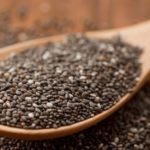Fatty fish are not only incredibly delicious but also highly nutritious and versatile in cooking. Today, let’s explore the world of fatty fish, including their benefits and how to select the freshest catch.
1 What are Fatty Fish?
Fatty fish, also known as oily fish, are those that contain abundant oils in their body tissues, especially in the belly cavity. Unlike other deep-water fish such as cod and catfish, fatty fish primarily live near the water surface.
 Fatty Fish
Fatty Fish
According to the American Heart Association (AHA), it is recommended that individuals consume a minimum of 198g (equivalent to 2 servings) of fatty fish per week. This is because fatty fish are rich in omega-3 fatty acids, vitamins, and minerals, offering a plethora of health benefits and improving cardiovascular health while reducing inflammation.
2 Types of Fatty Fish
Anchovies
Anchovies are small yet mighty, and they are a staple in Vietnamese cuisine, used in a variety of dishes from salads to braised, fried, and dried preparations. Despite their size, anchovies pack a nutritional punch, especially with their high omega-3 content, which helps prevent heart attacks, strokes, and hypertension.

Wild Salmon
Wild salmon inhabits the open ocean and primarily feeds on algae and plankton, resulting in lower fat content and a less buttery taste compared to farmed salmon. However, this doesn’t diminish its nutritional value. Wild salmon boasts high levels of omega-3s beneficial for cardiovascular health, but with significantly lower mercury levels than its farmed counterpart.
 Wild Salmon
Wild Salmon
Albacore Tuna
Albacore tuna, also known as longfin tuna, is typically found in warmer waters such as the Mediterranean Sea or off the coast of Japan. While its meat is milky white and contains less oil, it boasts three times the amount of omega-3s compared to other fatty fish. These omega-3s are essential for preventing blood clots, reducing liver fat, improving skin health, and enhancing sleep quality.
 Albacore Tuna
Albacore Tuna
Atlantic Herring
Similar to anchovies, Atlantic herring is a small, schooling fish that can be used in a variety of dishes, including salads, pickling, grilling, and smoking. It is an excellent source of healthy fats, particularly omega-3s, which are crucial for producing red blood cells, enhancing memory, and promoting brain health.
 Atlantic Herring
Atlantic Herring
Sardines
Sardines are a familiar favorite, appearing in a multitude of dishes, from salads and sour soups to grilled, salted, and even canned preparations. Rich in omega-3s, sardines help prevent cancer and contain low mercury levels, reducing the risk of nerve toxins.
 Sardines
Sardines
Farmed Salmon
Farmed salmon is more affordable and readily available than its wild counterpart, making it a common choice for many households. Despite its lower cost, farmed salmon still boasts an impressive nutritional profile, particularly its high omega-3 content, beneficial for heart health.
 Farmed Salmon
Farmed Salmon
Swordfish
Swordfish meat is white, fragrant, and firm, making it ideal for grilled dishes. However, it is less commonly found due to its diet of smaller fish, resulting in higher mercury and toxin levels compared to other ocean fish. Swordfish is an excellent source of omega-3 and omega-6 fatty acids, which reduce inflammation and maintain healthy blood pressure, preventing hypertension.
 Swordfish
Swordfish
Alaska Pollock
Alaska pollock is typically wild-caught in the USA and is an excellent source of omega-3s and other essential fatty acids for the body. Additionally, it has very low mercury levels. Alaska pollock also contains niacin, which reduces joint pain, riboflavin to alleviate migraines, and an abundance of potassium to prevent muscle cramps.
 Alaska Pollock
Alaska Pollock
Fish Oil
If incorporating fatty fish into your daily diet is challenging, consider taking fish oil supplements to ensure you’re getting enough omega-3s. Research has shown that consuming 226 to 1800mg of fish oil daily can help prevent cardiovascular diseases, atherosclerosis, fatty liver, high cholesterol, heart attacks, strokes, and hypertension.
 Fish Oil
Fish Oil
3 How to Choose Fresh Fatty Fish
When selecting fatty fish, it is essential to opt for fresh, live fish to ensure they retain their full nutritional profile. If live fish are unavailable, you can choose chilled fatty fish, but look for clear eyes, pink gills, and a storage temperature below 5°C. Avoid fish with cloudy eyes, indicating prolonged cold storage.
Additionally, minimize the time fatty fish are exposed to room temperature after purchase. Ideally, transfer them to a refrigerator as soon as possible to maintain their firmness and freshness.
Pro Tip
When thawing frozen fatty fish, transfer them from the freezer to the refrigerator instead of directly to room temperature. This preserves freshness and minimizes bacterial growth during the thawing process.
 How to Choose Fresh Fatty Fish
How to Choose Fresh Fatty Fish
Now you know all about fatty fish and how to select the freshest options. We hope you found this information useful and are ready to explore the delicious world of fatty fish!



































